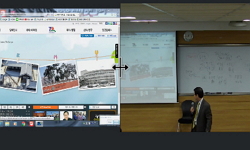교통시설의 건설과 유지관리, 교통수단의 운영 등을 위해 매년 막대한 비용이 집행되고 있지만, 교통수단별 전체적인 교통비용의 추정이나 이를 근거로 한 수단간 비교는 이루어지지 않고 ...
http://chineseinput.net/에서 pinyin(병음)방식으로 중국어를 변환할 수 있습니다.
변환된 중국어를 복사하여 사용하시면 됩니다.
- 中文 을 입력하시려면 zhongwen을 입력하시고 space를누르시면됩니다.
- 北京 을 입력하시려면 beijing을 입력하시고 space를 누르시면 됩니다.

도시교통수단별 교통비용 비교 연구: 서울시를 대상으로 = Comparison of transport cost by urban travel mode – Case of Seoul
한글로보기https://www.riss.kr/link?id=A108759230
- 저자
- 발행기관
- 학술지명
- 권호사항
-
발행연도
2023
-
작성언어
Korean
-
주제어
Urban Travel Mode ; Transport Cost ; Internal Cost ; External Cost ; 도시교통수단 ; 교통비용 ; 내부 비용 ; 외부 비용
-
등재정보
KCI등재
-
자료형태
학술저널
-
수록면
1-18(18쪽)
- DOI식별코드
- 제공처
- 소장기관
-
0
상세조회 -
0
다운로드
부가정보
국문 초록 (Abstract)
교통시설의 건설과 유지관리, 교통수단의 운영 등을 위해 매년 막대한 비용이 집행되고 있지만, 교통수단별 전체적인 교통비용의 추정이나 이를 근거로 한 수단간 비교는 이루어지지 않고 있다. 따라서 이 연구는 2019년 서울시를 대상으로 각 교통수단별로 발생하는 교통비용을 추정하고, 이를 통행량 규모로 나누어 통행거리당 발생하는 교통비용을 비교하였다. 분석 결과, 서울시의 교통수단별 교통비용은 승용차가 가장 크고, 버스, 도시철도, 택시, 자전거의 순서로 나타났으며, 통행인-km당 교통비용을 비교하면 승용차, 택시, 버스, 도시철도, 자전거의 순서로 나타났다. 특히, 버스의 통행거리당 교통비용은 승용차나 택시의 절반 수준이었으며, 도시철도는 1/4 수준, 자전거는 1/6 수준으로 분석되었다. 비용 항목별로 보면 승용차나 택시는 내부비용과 외부비용이 모두 큰 것으로 분석되었고, 도시철도는 내부비용이 버스보다 크지만 외부비용이 가장 작은 수단으로 나타났다. 이러한 결과는 대중교통 및 녹색교통에 우선을 두고 있는 서울시의 교통정책방향에 정당성을 부여할 수 있는 것이며, 그 안에서도 준공영제를 시행하고 있는 버스에 비해 도시철도와 자전거에 대한 지원이 상대적으로 부족함을 확인할 수 있는 결과이다. 이 연구는 통행거리당 교통수단별 교통비용을 비교하고, 향후 대중교통과 자전거에 대한 수단전환 유도를 위한 방향성을 도출하였다는 데에서 의의가 있다고 하겠다.
다국어 초록 (Multilingual Abstract)
A large amount of cost is spent every year for the construction and maintenance of transportation facilities and the operation of urban travel modes, but there is no estimation of the overall transport costs by travel mode or comparison among them. Th...
A large amount of cost is spent every year for the construction and maintenance of transportation facilities and the operation of urban travel modes, but there is no estimation of the overall transport costs by travel mode or comparison among them. Therefore, this study estimated the total transport cost incurred by each urban travel mode for Seoul in 2019, divided it by the volume of traffic, and compared the transport cost incurred in unit travel. As a result of the analysis, the transport cost according to unit travel was the largest in passenger cars, followed by taxis, buses, urban railways and bicycles. In particular, the transport cost per unit travel of bus was half of those of a passenger car or taxi, the transport cost per unit travel of urban railway was analyzed to be 1/4, and the transport cost per unit travel of a bicycle to be 1/6 of those of a car or taxi. Considering the direction of Seoul's transportation policy, it is necessary to limit financial support for taxis, and support for urban railways and bicycles is relatively insufficient compared to buses. This study is meaningful in that it compares the transport costs of each travel mode per unit travel and derives a direction for inducing modal shift for urban railways or bicycles in the future.
동일학술지(권/호) 다른 논문
-
다차원 척도법을 활용한 개인형 이동장치 인식에 관한 연구
- 한국교통연구원
- 박선진
- 2023
- KCI등재
-
자율주행차량 선박 자동하역지원시스템(AVAS) 도입을 고려한 자동차 선적시간 및 비용 시뮬레이션 분석 연구
- 한국교통연구원
- 장선희
- 2023
- KCI등재
-
GTX-B노선의 예비타당성 통과요인 분석 : 경제적 기준과 정치적 요인의 상호작용
- 한국교통연구원
- 가보연
- 2023
- KCI등재





 KCI
KCI




